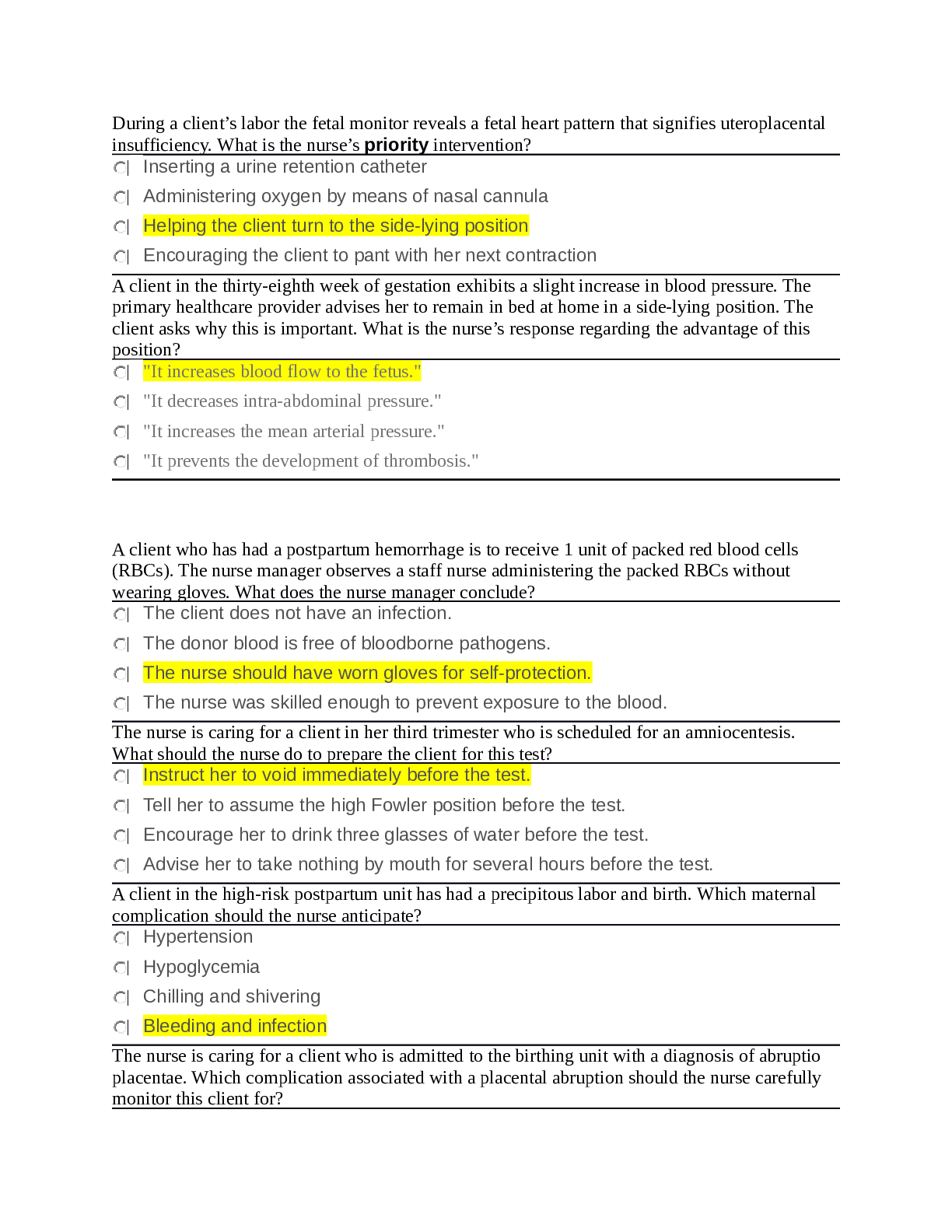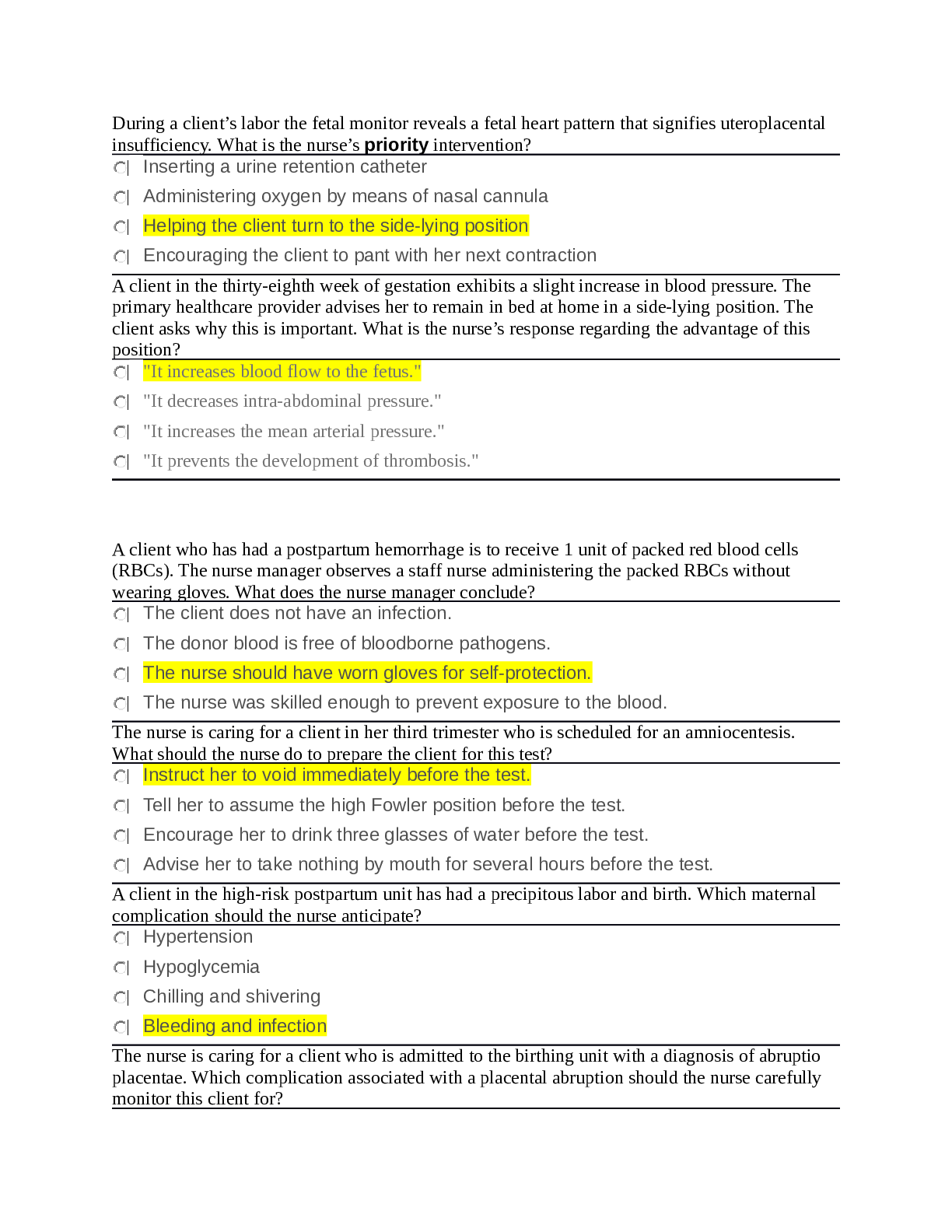Pregnancy Labor Childbirth Postpartum At Risk EAQ
Course
Project Management
Subject
Chemistry
Category
Questions and Answers
Pages
30
Uploaded By
ATIPROS
Preview 5 out of 30 Pages


Download all 30 pages for $ 12.50
Reviews (0)
$12.50
